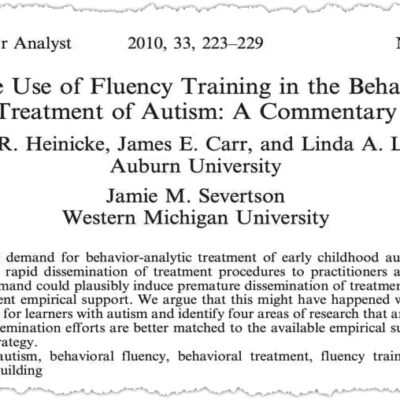On-demand CEUs for BCBAs related to behavioral fluency, precision teaching, and the Standard Celeration Chart
List Grid
Sort by Popularity
Saved products
Showing 1 – 1 of 1 results Showing all 1 results Showing the single result No results found
Filters Sort results
Reset Apply
On the Use of Fluency Training in the Behavioral Treatment of Autism: A Commentary Megan R. Heinicke, James E. Carr, Linda A. LeBlanc, & Jamie M. Severtson (18) Read the following article and pass a 5-question quiz on it:
Heinicke, M. R., Carr, J. E., LeBlanc, L. A., & Severtson, J. M. (2010). On the use of fluency training… Show more (+) Read the following article and pass a 5-question quiz on it:
Heinicke, M. R., Carr, J. E., LeBlanc, L. A., & Severtson, J. M. (2010). On the use of fluency training in the behavioral treatment of autism: A commentary. The Behavior Analyst, 33(2), 223-229. Show less (-) BCBA CEUs: 0.5 |



